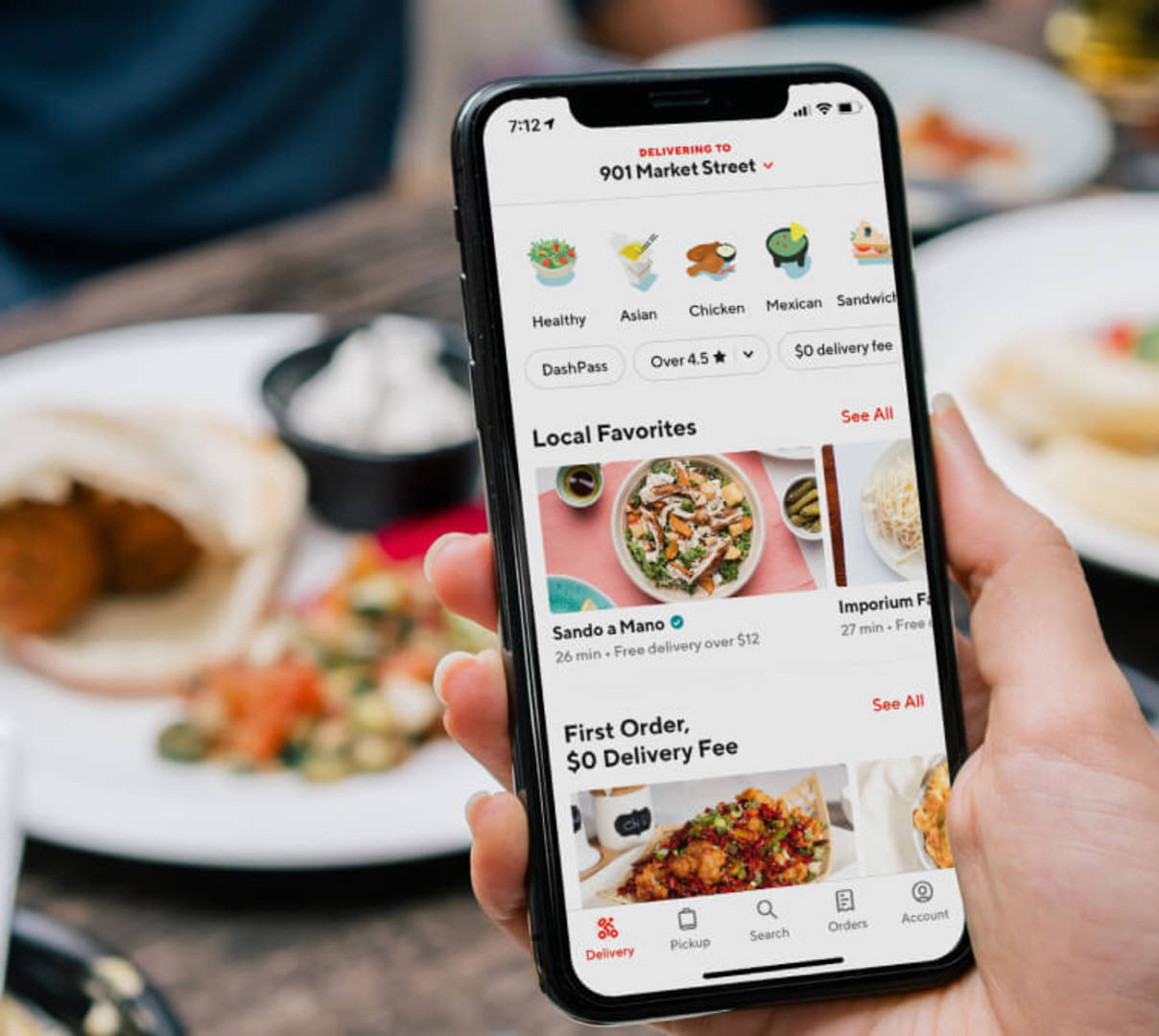The restaurant trends coming out of the last year reveal the industry is still reeling from the impact of COVID-19. From an employment perspective, restaurants were hit harder than any other industry, with nearly 2.5 million jobs below its pre-pandemic level.
At DoorDash, we’re doing our part to help the restaurant industry get back on its feet. Since March 2020, DoorDash relief programs have saved restaurants more than $120 million, and our promotions have generated one million incremental deliveries for local restaurants. A Technomic report found that the odds of staying open during COVID-19 are six times more likely for restaurants on DoorDash. We also partnered with BlueVine to provide restaurants with an accessible path to applying for a PPP loan, and are working with Kiva to provide access to 0% interest loans to Black- or immigrant-owned DoorDash restaurants. Finally, our first annual Main Street Strong Restaurant Conference brought together chefs, restaurateurs, and leaders from across the industry to discuss how they’ve adapted to the unique challenges of COVID-19.
With government restrictions starting to lift, restaurant operators are looking ahead to 2021 restaurant trends. Consumers are eager to get back to in-person dining — but at the same time, they’ll continue to crave the convenience of delivery.

We’ve found that even as the vaccine becomes more available and more social occasions return to restaurants, consumers will continue to desire expanded off-premises options going forward. Both will continue to be key for industry growth.
With that in mind, below are key off-premise restaurant trends and predictions for 2021 and beyond.
1. Driving long-term growth with delivery and pickup
In March of 2020, restaurants were forced to shift to off-premise-only, in what the NRA said was "likely the fastest pivot in industry history."
No matter the economic environment, convenience will remain a key factor for diners — especially Millennials and Gen Z consumers who are accustomed to on-demand services. The NRA found that 67% of millennials say the availability of delivery makes them more likely to choose one restaurant over another.
Looking ahead, restaurants will need flexible operations that can drive revenue as COVID-19 regulations evolve.

COVID-19 is accelerating the trends of the restaurant industry, moving us into a world we were likely headed anyways — and delivery is here to stay.
Offering pickup and delivery allows restaurants to keep up with consumer preferences and sustain their business for the long term. While some restaurants opt to build in-house delivery operations, Credit Suisse senior analyst Lauren Silberman noted that this can be "expensive and operationally taxing." By partnering with third-party technology platforms like DoorDash, restaurants can stay ahead of this restaurant trend and drive incremental sales with an entirely new customer base.
2. Using white-label partnerships to power off-premise
As off-premise continues to drive restaurant trends in 2021, many restaurants are seeking white-label solutions. Rather than building an online ordering system from scratch, restaurants can partner with third party platforms to offer delivery on their own digital channels under their own brand. This allows them to drive brand loyalty and get access to valuable customer data.
White-label restaurant technologies come in a few different flavors. DoorDash Online Ordering allows restaurants to set up commission-free online ordering directly from their own website. You can customize Online Ordering to match your brand, and integrate it into your existing POS. Online Ordering also comes with built-in features — such as recommended add-ons and rich menu photos — that are designed to drive larger ticket sizes. There are no monthly software fees for Online Ordering; instead, restaurants pay payment processing fees per order. Dallas-based restaurant Texas de Brazil saw a 58% increase in DoorDash sales after adding Online Ordering, and their DoorDash average ticket sizes are 20% higher than a competing platform’s.
If you already have your own online ordering platform but need more drivers to scale your delivery business, DoorDash Drive On-Demand is another option. Our white-label solution provides merchants with a network of drivers to deliver orders placed on your website or app, so you can save on labor costs. Australian QSR Roll’d saw a 177% increase in native delivery sales after rolling out Drive On-Demand to its locations.

In December, we hit a massive milestone. Not only did Roll’d meet last year’s sales, but we were up by 4% — in the middle of COVID-19. I truly believe this would not have happened without DoorDash.
3. Reaching new markets with ghost kitchens
Nation's Restaurant News describes ghost kitchens as restaurant concepts operating in shared commissary spaces and offering off-premise-only food with no traditional dining room. Multiple restaurant concepts may operate in a ghost kitchen, which allows restaurants to share equipment while providing consumers a “virtual food hall” experience.
These shared spaces give restaurants a cost-efficient way to expand to high-demand markets. Ghost kitchen provider Zuul focuses on New York City, while Kitchen United has locations throughout the United States. And in 2019, DoorDash launched DoorDash Kitchens, a 5,000-square-foot commissary kitchen space for restaurants looking to expand off-premise sales in the San Francisco Bay Area without opening a physical restaurant.
With higher-margin business models and the ability to deliver to new markets without the real estate costs of dine-in establishments, ghost kitchens will continue to be attractive strategies for restaurants in 2021. Jean Chick, principal and US restaurant and food service leader at Deloitte, expects to see strong growth in the ghost kitchen market based on 2020 investment in the space and diner demand for delivery and digital accessibility.
4. Generating incremental sales with virtual brands
Another restaurant industry trend that’s growing in popularity is virtual brands. This strategy allows restaurants to launch a new delivery-only concept using their existing kitchen and staff. Virtual brands help restaurants drive incremental sales and reach new customers without increasing operational costs.
“Restaurants are already reaping the benefits of increased sales from adding virtual brands, so they won’t likely want to remove that channel when dining rooms go back to full capacity,” explained Andrew Charles, an analyst at Cowen.
In 2020, casual dining chain Smokey Bones rolled out two delivery-only virtual brands — The Wing Experience and The Burger Experience — at its 61 locations across the US, creating 122 virtual restaurants. Scaffidi Restaurant Group recently opened Scaffidi's Wings on Wheels, a delivery-only chicken wing restaurant and the first virtual kitchen in the Ohio Valley region.
5. Boosting profit margins with to-go alcohol
Alcohol delivery is a great way for restaurants to increase ticket sizes and boost profit margins on off-premise orders.

We found that when customers add a bottle of wine or 6-pack of beer, there’s a 10-12% profit increase on that order.
These ticket sizes can even be higher than dine-in orders, since guests purchase a full bottle of wine instead of a glass.
In addition to alcohol delivery for restaurants, DoorDash now offers alcohol delivery for liquor stores, specialty beer and wine shops, and wholesalers — enabling these merchants to reach DoorDash customers and leverage our powerful logistics platform.
Restaurant trends: Meeting customers where they are
Ever resilient, restaurants have embraced innovation, adopting new technologies that help them connect with guests wherever they are. Looking ahead to a post-COVID-19 world, off-premise strategies will continue to strengthen restaurants and provide flexible, sustainable business models that can weather any storm. Want a partner that can help you get there? Sign up for DoorDash today.





